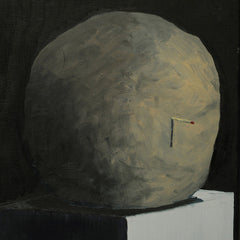
|
Caretaker - An Empty Bliss Beyond This World LP (History Always Favours The Winners) Our Review: Working with sound as meditations on memory and loss, The Caretaker takes old jazz records, various effects, and what sounds like a battery of old beat up Victrolas, and weaves Philip Jeck like soundscapes. Unlike Jeck, the source sounds here are not obfuscated. The Caretaker records are almost like spectral mix-tapes, especially on this one, which sounds like old 78s left to play in a big old auditorium. The room's reverb lovingly wreathes the music in a gauzy old timey haze. The surface noise, hiss, crackle and pop are accentuated by the cavernous space. Better yet, replace the auditorium with an old abandoned mansion. Imagine the great room, animal heads on the walls, old oil paintings, a massive fireplace, charred black, old decaying rugs, all the furniture covered in white cloths, looking like ghosts, cobwebs in all the corners, the floor beneath a layer of dust. In the corner, there's a solitary antique record player. Lit up, its turntable spinning slowly some old dusty record, to a room full of spirits. It's a sonic requiem for a time that once was. The music seeming to reflects the ever fading memories. Haunted house jazz, old timey seance blues, mournful melodies played on an old piano, muted trumpet, swoonsome strings, shuffling drums, a slow motion big band performing live in the ether, playing lament after lament, dedicating it to their lost loves, and loves lost. An Empty Bliss Beyond This World plays like some archival collection of lost 78's, but where the records' provenance is unknown, timeless music that could have come from anytime, and anywhere, the imperfections and inconsistencies as much a part of the sound as the music itself, all of that hiss and crackle a warm wreath of time-transformed-into-sound detritus, the passing of time mad physical, a sonic memorial to the past. So utterly gorgeous. |
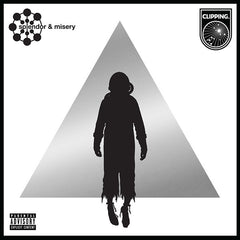
|
Clipping - Splendor & Misery LP (Sub Pop) Our Review: What started as a strange pastiche of sheer hellish miasma dotted with mainstream hip-hop samples is now the larger-than-life project of Clipping. William Hutson (who we first knew as a cerebral noise technician working as Rale) and Jonathan Snipes were the two who started Clipping. back in the late aughts, but the hip-hop / industrial noise assemblage didn't fully take shape until Daveed Diggs (then of the True Neutral Crew and later a Tony award-winning actor for his role in Hamilton) stepped in as the wild-maned lyricist and frontman to incredible alomb. When their debut album dropped in 2014, few were prepared for the oblique abstract assault that Clipping. delivered. That album hammered and shattered electronics amidst Diggs' hyperactive tongue-twisting lyrics in his nightmare-within-a-nightmare poetics of urban dystopia. Splendor & Misery is another concept record that follows the travails of a sole survivor from a distant future slave uprising aboard an interstellar cargo ship. Where the debut slowly dissolved the psychic pressure from an opening onslaught of rhythm and noise, Splendor & Misery is an embryonic abstraction of decentered electronics where Diggs' protagonist learns how to speak, gain agency and ultimately address his condition as a presumed free man. It's Diggs who controls the rhythm and the pace of the album, as Clipping's arrangements hinge upon eeriely vacant electronics, muted rhythms and the occasional African Methodist sacred hymn deconstructed into a ghostly melody. This sterilized minimalism is all by design in the construction of this conceptual, ambitious album of Afrofuturism that's easily read as a damning parable of racial dislocation. Few if any could pull off an album this bold. |

|
Cass McCombs - Mangy Love 2xLP (Anti-) Our Review: Flutes, breezy vibes, drum machines, a guitar tone that shares a striking similarity to Jerry Garcia circa 1988, some borderline shoegaze and a nigh-uncomfortable amount of Brothers In Arms era Dire Straits maneuvers; these are all potential turn-offs. There's a lot about this new Cass McCombs album that shouldn't work and that on paper you shouldn't like, but it does, and you do, and it's ok. The thing that keeps it all together - aside from the fact that it's impeccably produced and beautifully recorded - is the thing that keeps every Cass record together, the lyrics and that voice. McCombs is one of the best lyricists of his generation and this new long player, Mangy Love, is no exception. From playful to brutal to inscrutable, McCombs has a way of dropping a one-liner that's unrivaled in indie-rock. "Four years I've been clean, now I think I'll shoot myself" and "you got the disposition of a dirty bomb mixed with Minnie Mouse," he sneers in "Rancid Girl" while later, in "Cry," he drops arguably the most wicked riposte to 2016 we've seen, "we're like two peas in a pod – Netflix and die." Mangy Love is McCombs finest effort, in this reviewer's humble opinion, since 2009's Catacombs and maybe his best ever. |

|
Antony And The Johnsons - I Am A Bird Now LP (Secretly Canadian) Our Review: Holy shit, this record destroys me. Within 30 seconds, this record had already given me chills, unnerved me and literally made me want to cry. On the first listen even It's all about Antony's voice - a rich throaty tenor that slips effortlessly into a keening falsetto. A luxurious vibrato, trilling and wrapping itself around every note. Equal parts Nina Simone, Tiny Tim, Tracy Chapman, Jimmy Scott and even a little Elvis Presley. The instrumentation is minimal with just piano, upright bass, shuffling jazz drums, occasional electric guitar. Some songs sound like jazz standards, some like lost gospel classics, others like timeless spirituals. Soaring and maudlin, without becoming overwrought or overly dramatic. He's sort of like an otherworldly, avant-garde Rufus Wainwright. Or the sort of singer you would find in a piano bar in your strangest dreams. Totally chilling, absolutely haunting and completely beautiful. Features guest performances by Rufus Wainwright, Boy George, Lou Reed and Devendra Banhart. |
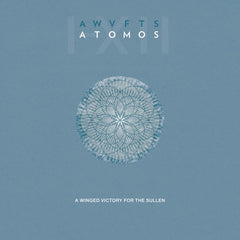
|
A Winged Victory For The Sullen - Atomos 2xLP (Kranky) Our Review: Atomos is album number two from these atmospheric chamber-ambient drifters, featuring members of one of guitardrone minimalists Stars Of The Lid. And like on the last Winged Victory full length, the mood and vibe is not that far removed from SOTL with the same sort of moody, broody, slow build majesty. The real difference this time around is a move toward a more electronic sound, taking the dark chamber music drift of SOTL, and adding more in the way of electronics and modular synths. Atomos, which is actually the score for a new ballet from choreographer Wayne McGregor, finds Winged Victors Adam Wiltzie and Dustin O'Halloran once again joined by an entire string section, the resulting multi-part piece is stunning, equal parts Stars Of The Lid, Rachel's and Godspeed You Black Emperor. Long stretches of hushed drift, dense, dramatic swirls of stirring strings are alternately somnambulant and intense. Dark pointillist pianos drift in fields of sun dappled symphonic thrum. Long tones tangle softly into cosmic swaths of dreamlike ambience. Aching melodies unfurl over swells of deep resonant rumble. The sound at times borders on pure chamber music, but usually evolving into something more abstract and ethereal. Sometimes, it's droned out and minimal, other times sweeping and majestic. As a whole, Atomos is stately, somber, haunting and melancholic, the record blossoms slowly and subtly, evoking wide open spaces, the sun rising over windswept hills or planets glowing in the inky blackness of space. The sound of Atomos somehow both personal and vastly epic. |
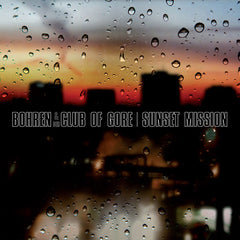
|
Bohren & Der Club Of Gore - Sunset Mission 2xLP (PIAS) Our Review: Sunset Mission is Bohren & Der Club Of Gore's third album, dating back to 2000. This is music for a dark-night campfire out on the plains of Mordor or perhaps the ultimate noir-jazz soundtrack to a hypothetical first person shooter video game set in after-dark Berlin. Dark, stark, slow-moving, and lovely. Slow and beautiful, relying heavily on the ultra-heavy subsonics of the bass and the eerie wavering tones of the organ. Very atmospheric and evocative, indeed chilling. Of the Bohren discography, Sunset Mission seems to be the jazziest (if indeed it's appropriate to use that term), definitely with the most sax of any of them. |
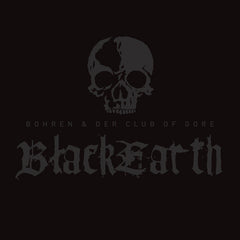
|
Bohren & Der Club Of Gore - Black Earth 2xLP (PIAS) Our Review: Black Earth is the dark as night new album from Borhen & Der Club Of Gore. Central to Bohren is the concept of "quiet heaviness," using their self-described "horror jazz" instrumentation of subtly-brushed drums, down-tuned double bass, sparse piano, Fender Rhodes, mellotron and melancholic saxophone to create an atmosphere of heaviness "which is otherwise only achieved using distorted guitars and lots of noise." Strange as it may seem, black metal is their main influence. Yet Bohren's music is far from loud and fast. Metallic or not, it's certainly doom. Creeping, plodding, yet sleepily melodic. Each note played on the piano, each hit of the snare carries great weight and beauty. Their music falls like thick drops of liquid into a still black pool, rippling the surface with unknown echoes. Foreboding and entrancing. Certainly, more than deserving of this album's black on black artwork. The sultry, smoky saxophone introduced on their previous album Sunset Mission is still in evidence, though not so much as before. When it's present, it only adds to the noir-ish vibe. And compared to the previous Sunset Mission, Black Earth extends Bohren's methods to further extremes: slower, moodier, dronier, lovelier: "heavier". Quite quietly heavy, indeed. |
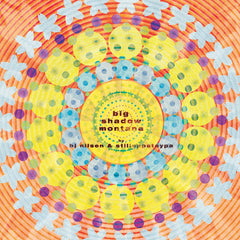
|
BJ Nilsen & Stilluppsteypa - Big Shadow Montana LP (Helen Scarsdale Agency) Our Review: Collaborations in the experimental scene come and go, so it's so great to see one that has some longevity. This is album number seven from BJ Nilsen and Stilluppsteypa, and the fourth released by the discerning Helen Scarsdale Agency label. Since this trio (Benny plus Sigtryggur and Helgi of Stilluppsteypa) unleashed their drunken drone trilogy through the aforementioned Agency, they've been venturing into all sorts of delirious bouts of murky psychedelic collages and imagined soundtracks. There were the weird ruminations upon a found cassette, turned into a mondo filmscore on Man From Deep River; and then the sci-fi opus of synth meanderings found on Space Finale. Now what may be the best to emerge since that earlier alcohol-inspired trilogy is this, the mercurial and hauntological album Big Shadow Montana. Two long-form pieces make up the album, with the A side standing as a hallucinatory foreshadowing of what is to come on the flip. Here, ghostly drones broadcast directly out of the haunted ballroom from The Shining, flickering with half-received transmissions, bumps in the night, and any number of other worldly sounds. Bits of structure emerge in this slow-motion churning of drone, shadow, and filigree coming across somewhere between the fucked up collages that seem to bring all of the Teenage Filmstars records to a close and the subterranean drone-rock sensibility of German Oak. When the record flips, a cosmic stream of vintage synths slump toward oblivion paralleling what has been done by Emeralds and Oneohtrix Point Never (both of whom have released work alongside this trio on Editions Mego), but before this can venture any further down the rabbit hole of Schnitzler and Schulze references, Nilsen & Stilluppsteypa slip into a faux-exotica guise with cheap Casiotone melodies swaying to and fro through old Les Baxter and Martin Denny records. It's a signature move for Stilluppsteypa, if anyone remembers how they mustered a similar strategy on The Best Possible Yet back in 1997. But the maudlin organ harmonies and percolating tone-bloop oscillations are much more confident here, emerging perfectly out of the drone fog like those organ-led numbers on that Deathprod boxset, only to slip into a twin engine thrum of inner-space expansion. In listening back to the second side of the album, it's clear that the first is a lengthy dub of the second, recast and recontextualized as a percussive ghost. Totally captivating through and through. |

|
Biosphere - Microgravity 3xLP (Biophon) Our Review: Biosphere's Microgravity was a watershed album for the burgeoning rave scene. In 1991, techno found itself splintering into the harder / faster sounds that took acid house towards gabber, and the evolution of more complex variants through the innovations of Aphex Twin and Autechre. And then there was the chill-out / ambient crowd. It has to be said, that this was always the most problematic, as the bulk of efforts from this end of the spectrum was substantively vapid in taking up the ideas of kosmische electronica and watering it all down with drool cups and pacifiers. All of this without the benefit of a rhythm to trick the body into thinking that there was something revolutionary going on with these futuristic sounds. Biosphere was one of the few phenomenal exceptions to the more banal forms of ambient-techno. Yes, the term is an oxymoron of a genre marker, but it stuck a long time ago. Geir Jenssen (aka Biosphere) cut his teeth in the late '80s in the ethereal-pop project Bel Canto, with Biosphere acquiring the dark sheen of Detroit techno from that time period. The rhythms which Jenssen programmed for Biosphere's debut Microgravity have a slinky groove that owes considerable gratitude to Juan Atkins' Cybotron and Model 500 recordings. The nocturnal, reverberant sprawl that became the signature of Biosphere's later recordings of drumless space was in its nascent phase, but he was clearly ahead of the curve; and Microgravity certainly holds its own decades later. As a side note, the first recordings that Jenssen produced as Biosphere were initially rejected by Nettwerk back at the time, only to attain considerable notoriety when R&S released those tracks along with all of Microgravity in 1992. This reissue contains a third album of unreleased material recorded back then. |
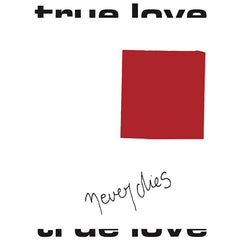
|
Ahoe-Ahoea - True Love Never Dies LP (Bunker Pop) Our Review: Originally known as Na Een Keer Oefenen (After One Rehearsal), this early-1980s Dutch outfit was quickly and earnestly re-christened Ahoe-Ahoea, a homage to Johnny Weissmuller's epic Tarzan yell from the 1930s film. That bizarre jungle yodeling would figure prominently in the vocals of Marius van Dalen whose chaotic, lyrical confrontation would provide an aggressive basis for Ahe-Ahoea's more stretched-out and recognizable post-punk delivery. Like all DIY music of the era, the focus is on inspiration and immediacy, with Ahoe-Ahoea showing as much gumption and gnash as many of the more storied acts chronicled by Messthetics. True Love Never Dies is Bunker Pop's excavation of Ahoe-Ahoea's lone 1983 cassette, re-casting this Dutch art squat house-band as part of the larger DIY movement. |
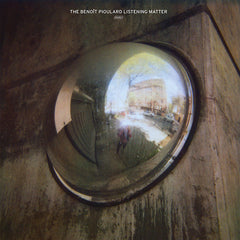
|
Benoit Pioulard - The Benoit Pioulard Listening Matter LP (Kranky) Our Review: The sixth release on the Kranky label from musician Thomas Meluch follows a rough period of grief and recovery. A return of sorts to the bedroom shoegaze pop of his earlier recordings after last years largely instrumental and ambient Sonnet, this new album is marked by short dreamy guitar-driven songs of love, hurt and loss framed often by a cushioning ambience of field-recordings and musique concrete. Probably his most intimate and sparingly uplifting release. Yet the songs do not linger in their moodiness, but instead propel forward remarkably with the ponderous urgency of life. For fans of Caribou, Beck and Iron and Wine. |

|
Billy Gomberg - Slight At That Contact LP (Students Of Decay) Our Review: Brooklyn's Billy Gomberg is an electronic musician who dials back to the clicks and cuts milieu that explored the poetics of a single systematic glitch that could end the world. The celebrated failure of Y2K to bring down civilization left at worst a shadow of paranoia and at best an ambivalence toward the technologies that infiltrate our collective mind, body and spirit. Many artists, Coil in particular, embraced these concepts in a teleological perversion. Gomberg finds himself in a similar cathedral of re-engineered sound, though he's more of an agnostic in worshiping the glitch. Slight At That Contact is a circumspect album that mopes and shuffles through digital slices and fractures of what may have started out as some spartan tribute to Chet Baker. The surfaces of pixilated polygons, lossy frequency artifacts and deliberately awkward juxtaposition allow for distorted glimpses into what may have once been. Gomberg's somber synthesis of the tonal quality of bass, clarinet, drum and even bird song have all been fabricated through the realm of the digital, but the existential ennui of these maudlin, overcast sounds carries through regardless. |
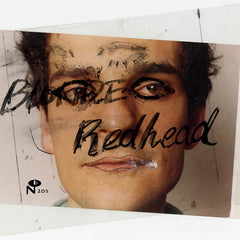
|
Blonde Redhead - Masculin Feminin 4xLP (Numero Group) Our Review: On the heels of their deep dive into the Unwound discography, the Numero Group set their sights on that of Blonde Redhead with Masculin Feminin, a 4xLP, 37-track box set comprising the group's first two releases – an eponymous debut and its follow-up, La Mia Vita Violenta, both released in 1995 on early BR partisan Steve Shelley's Smells Like Records label – along with contemporaneous singles, demos, and radio spots. The apocryphal BR origin story: Milanese twins Simone and Amedeo Pace arrive in Boston to study at the famed Berklee College of Music, quickly begin to loathe both, move to NYC (where they cement a core lineup of i fratelli Pace plus Kyoto-born art student Kazu Makino), and begin a steady climb through sonically youthful guitar squall to polyrhythmic, libidinal art-pop. While Blonde Redhead finds the band more or less squarely under the considerable sway of Shelley's main gig ("I Don't Want U," "Astro Boy," "Swing Pool,"), this point tends to be overstated. As much anchored by S. Pace's masterful, propulsive drumming as buffeted by Makino's startling, razor-sharp gulps and smeared vocals, La Mia Vita Violenta – which bears a dedication to recurring BR avatar Pier Paolo Pasolini – goes a long way toward establishing the template that reached its apotheosis with 2003's dense, hazy trauma-pop masterpiece Misery Is A Butterfly ("U.F.O.," "Down Under," "Bean"). In fact, the very title of Numero's inaugural BR retrospective, cribbed from Godard's 1966 critique of pop commercialism and affixed to a band whose name pays tribute to a trio of superlative NYC no-wavers, neatly encapsulates this progression. Less the children of Marx and Coca-Cola than Morricone and post-Crutchfield DNA, Masculin Feminin captures the compelling first steps of one of contemporary indie's most restless and enduring outfits. |
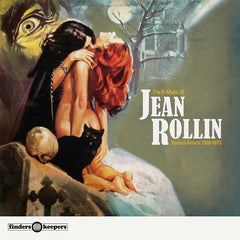
|
Various - The B-Music of Jean Rollin: 1968-1973 LP (Finders Keepers) Our Review: A collection of kooky and creepy music from the films by French underground auteur Jean Rollin, circa 1968-1979. Many of these film revolve around vampires, and many of about sexy lesbian vampires! The late Rollin has been proclaimed the "father of European Horrortica." On the freaky fringes of free jazz and psych rock, the tracks found here are the perfect accompaniment to the director's sexy, surreal cinematic phantasmagorias. And unless we're much mistaken, we recognize one of the tracks here in Acanthus' theme to "Le Frisson Des Vampires," as having been surreptitiously covered in heavier fashion by drugged-out doomlords Electric Wizard on their Witchcult Today album. Another one of note is Pierre Raph's aptly-titled "Gilda & Gunshots," a track of consisting of excited percussion, jazzy bass and pretty trumpet, overlaid with whipcrack-like gun shots, girlish whimpers and cries. It could almost be some noir-jazz experiment by the Boredoms. With great titles like "Abstract Procession," "Crotch Batterie," "Blue Doll Baroque" and "Croque Weasel", other tracks vary widely and weirdly, encompassing spooky theremin-like tones, chamber music drones, somber choirs, flute-laced grooves, melodic reveries, arrhythmic interludes, all sorts of stuff. It's a real cornucopia of suspenseful strangeness and freeform avant-rock. Composers/performers responsible include the aforementioned Acanthus and Pierre Raph, along with others Yvon Gerault and Francois Tusques. |
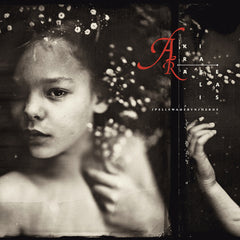
|
Akira Rabelais - Spellewauerynsherde LP (Boomkat Editions) Our Review: The tongue-twistingly titled Spellewauerynsherde is a hauntingly beautiful record from the enigmatic electronic composer Akira Rabelais. As with his previous albums, Rabelais offers a labyrinth of elliptical allegories, subtle chance operations and impressionistic romanticism as an accompaniment for his elegant sound constructions. Given the incredible amount of semantic engineering that went into this record, it is certainly possible that Rabelais deliberately arranged to have this album released at the same time as Bjork's Medula. The source for Snellewauerynsherde is a collection of traditional Icelandic a capella songs recorded in the late 1960s or early 1970s on Ampex tapes and then forgotten about. The first few tracks of Snellewauerynsherde present the raw recordings Icelandic songs, sanitized of their tape hiss and debris. The content may remain foreign to our ears, but the songs' existential sadness transcends any language barriers. When he actually processes these sources, he extracts a mournful etherialism that he stretches into a gracefully solemn minimalism that falls between Steven Stapleton's production of Current 93's A Little Menstrual Night Music, Eliane Radigue's evocative timbral compositions and Arvo Part's late period chorale pieces. Rabelais continues to distance himself from the clicks 'n' cuts electronica of his contemporaries and crystalize his own substantive self-built mythologies. |
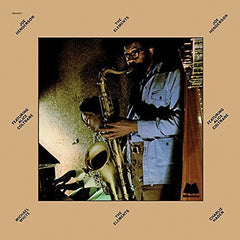
|
Joe Henderson - The Elements LP (Fantasy) Our Review: Originally released on Milestone in 1973, Joe Henderson's The Elements is a landmark document of spiritual jazz and the iconic tenor saxophonist's finest hour. Even when played through a thick haze of delay, Henderson's tone is distinct and powerful, honed over a decade of releases on Blue Note and Milestone. His earlier music had been decidedly post-bop, although it consistently pushed how far out jazz could go while still staying true to form. This record though is a true step beyond, with hints of psychedelia and fusion, Latin and African rhythms, and droning tanbura. There are four compositions, each a meditation on one of the classical elements: Fire, Air, Water and Earth. The Elements gives us the rare treat of hearing Alice Coltrane play in someone else's ensemble, and her contributions are sublime. The band also includes Charlie Haden, Michael White and Kenneth Nash. Remastered from the original tapes, The Elements is finally available again on vinyl and not to be missed. |
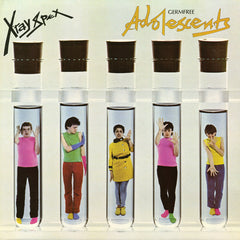
|
X-Ray Spex - Germfree Adolescents LP (Real Gone) Our Review: In the last years of the seventies, X-Ray Spex, fronted by singer / songwriter Poly Styrene, were one of the most visible and artistically successful punk originals. Led by Poly Styrene who had charisma with a capital C, the British band's songs were super intense, noisy and ragged, while simultaneously catchy, ridiculously melodic and hook-filled. Powerful, hundred-miles-an-hour drumming, wailing skronk saxophone, Poly's sandpaper yowl of a voice, it all adds up. X-Ray Spex obviously influenced Sleater-Kinney as well as pretty much any grrl punk group you can think of, and, hell, a lot of male-led bands too. And along with the Raincoats and Liliput, X-Ray Spex is the foundation of the female vision of punk! |
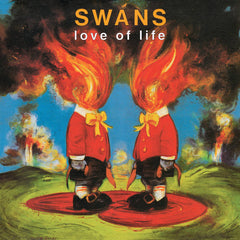
|
Swans - Love Of Life LP (Young God) Our Review: The necessary vinyl reissue of the 1992 album Love Of Life! A propulsive, almost jubilant Swans is heard here, foreshadowing the Americana twang that Gira would later adopt in the Angels Of Light after Swans called it quits in the late '90s. Gira's great trick on this album is that he layers his shimmering, chiming guitars into slowly building walls of dissonant harmonics that rasp out of the acoustic instrumentation. It's a much more sophisticated dynamic than the emaciated bombast of such claustrophobic Swans recordings like Greed and Holy Money; and comparatively, it makes for a more subtle incarnation of Swans, even when Gira implores his multiple drummers to hammer away at their kits with militaristic flair and insistent rumbling. |
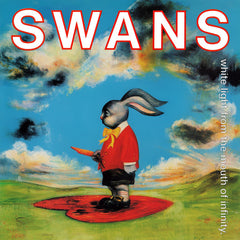
|
Swans - White Light From the Mouth Of Infinity 2xLP (Young God) Our Review: The necessary vinyl reissue of the 1991 album White Light From the Mouth Of Infinity! Swans were in a time of transition, after what M. Gira considered an epic failure in their one and only major label release, The Burning World (1989), and it is also worth noting that founding member / guitarist Norman Westberg had parted ways with Swans at this juncture. The tempered acoustic strum that Gira first mapped out on The Burning World carries over as the much more aggressive underpinning of the crashing hypno-drone-rock of much of White Light, most dramatically cast in the downer blues ballad "Failure" and the J.G. Thirwell co-produced drum-corps march of "Power & Sacrifice". The lilting jangle of the guitars and the brightly rendered drones that hang throughout both that album and Love Of Life counterpoints Gira's booming vocals, all of which helps to conjure a very triumphant Swans sound, effectively surging with huge crescendos of texture and density out of monolithic chords, riffs and rhythms. |
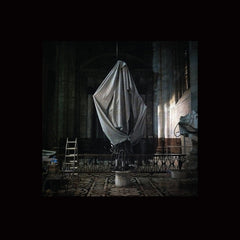
|
Tim Hecker - Virgins 2xLP (Kranky) Our Review: Record after record, Tim Hecker performs impossible sonic alchemy, transforming harsh noise into lush, layered dreaminess, weaving all manner of textures and fractured drones into something stunning and fantastical - including a whole record using nothing but Van Halen records as source material! That in particular sounds like one of those instances where the process is more interesting than the music itself, but nothing could be further from the truth. Hecker's Van Halen records is utterly and heartbreakingly gorgeous. Even with no knowledge of the music's provenance, you'd have to be dead inside to not be totally blown away. With every record, we found ourselves more and more in awe of Hecker's ability to create these impossibly pretty dronescapes, to constantly conjure up worlds of sound that evoke truly deep emotion in the listener. That said, Virgins might represent the most dramatic shift to date in Hecker's catalog, utilizing an entirely new sonic palette, which includes recordings of woodwinds, pianos, synthesizers and electronics. The results are dramatically different than previous outings. It still sounds like a Tim Hecker record, sort of. This time around, much of the music has a modern minimalist vibe. The influence of both Terry Riley and Steve Reich loom large, especially in the opening salvo, the brief almost psychedelic sounding loopscape of "Prism." Repetitive and hypnotic, with variable pitch shifts that make the whole thing woozy and slightly off kilter, but still lush and prismatic. On "Virginal I," Hecker brings to the foreground the piano which in turn is layered and looped and accretes into a seriously dizzying jumble. Then the tape speed begins fluctuating, and it gets noisier and noisier, and soon, it's not that far removed from past Hecker efforts: a swirling, dense squall of sound that manages to be both impossibly tangled and intricate, and at the same time totally mesmerizing and dreamlike. Some tracks here, like "Radiance", definitely harken back to the Hecker sound of old, airy and ethereal, warm and lush, a dreamy bit of manipulated sound, a smeary sonic blur that's softly psychedelic and utterly mesmerizing, but others, like the two part "Live Room" suite, deviate dramatically from what we're used to, as a fractured chamber music with his symphonic sounds wreathed in tape hiss and static, with seemingly no effort to remove the various non musical sounds, voices, conversations. The rest of the record unfolds in an equally unorthodox manner. Slow somber piano pieces are flecked with scrapes and shuffles. The notes slightly detuned, plenty of pitch warble, and subtle sonic tweaks, while elsewhere the previous plinked piano sounds are piled atop one another, all gradually blurred into an abstract smear of prismatic sound. Stunning! |
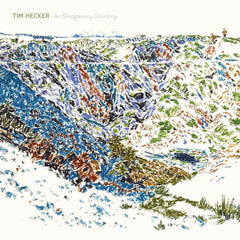
|
Tim Hecker - An Imaginary Country 2xLP (Kranky) Our Review: As demonstrated on numerous past recordings, Tim Hecker is a master sonic alchemist. With a handful of effects, a computer and a guitar and who knows what else, he is able to construct this time machine of sound. These recordings, while simply pleasing to the ear, are also transcendent. They soothe, they entrance, they mesmerize, they transport. The sound of An Imaginary Country is heavier, and thicker, altogether more powerful. This is the sort of sound that performed live through a massive PA could summon angels, or perhaps demons. But for all this added sonic weight, nothing is lost. The sounds are not just loud, they are multihued. every note, every chord, every bit of sound is alive with energy. It's as if Hecker has created a living breathing sound sculpture, made of transparent spheres. From afar, it's a gorgeous assemblage, the spheres shifting and dancing, playing out some elaborate composition, but pick one sphere, get up close and look inside, and there is a whole 'nother constellation of smaller glass spheres, engaged in a similarly beautiful and elaborate dance. A closer examination reveals the presence of thick warm whirring organs on such of the songs. Thus much of the record sounds choral as the music of some crumbling empty church, left to play blurred tones into eternity. Other tracks play out like watching some old filmstrip come to life, still surrounded by grit and hiss and buzz. There are a few moments of relative tranquility where the sounds are tamped down and held in check by an atmosphere of reverb and delay. In the end An Imaginary Country resolves as a blurry ballet of soft sound and of mysterious sonic events. |
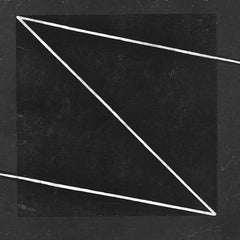
|
The Soft Moon - Zeros LP (Captured Tracks) Our Review: In the year since its release the Soft Moon's debut full length has become a critical darling of the music world. On that eponymous album, the songs were immediately gripping and pretty damn perfect. Within the sea of similarly styled bands who would describe themselves as "dark," The Soft Moon's debut will stand out as a classic. Soft Moon main-man Luis Vasquez has taken things to the next logical step by assembling a full band to bring these songs to the live stage. Vasquez and company effortlessly show the world that there is more where that came from, in creating another perfect slab of similarly shadowy post punk nihilism. On Zeros, the Soft Moon cranks through jagged rhythms, Factory style basslines, echo-drenched guitar jangle and hypno-wave groove. The mood is overwhelmly cold and clinical, even as the rhythms sweat and bleed. |
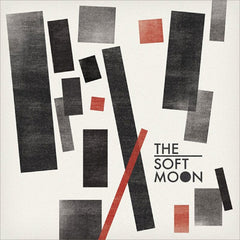
|
The Soft Moon - s/t LP (Captured Tracks) Our Review: Might anybody remember Steve Trecasse? We're guessing the answer is no. He has been a small-time music producer, who worked at a time for MTV way back in the mid-to-late '80s. He was responsible for all of the music on the shortlived MTV gameshow Remote Control, but he also composed the theme song for the first incarnation of 120 Minutes. The show grew into a rather banal rehash of major label sponsored "alternative" music, but the early years had some genuine underground acts showcasing their videos. Live Skull, Swans, Sonic Youth and Loop were some of the more atypical groups to get their videos on the air, alongside more conventional college rock favorites like The Sugarcubes, Love & Rockets and They Might Be Giants. But that theme song hedged toward the darker, grittier sound through a throbbing electronic underbelly girding an air-raid siren guitar swarm which was not too far from a Skullflower (circa Birthdeath & Form Destroyer) / Sigue Sigue Sputnik / Joy Division hybrid as bafflingly awesome as that may seem. Another weird piece of trivia about that theme song was that it was performed by Trecasse with Doug Di Franco (who might just be Double Dee, turntablist Steinski's partner in crime) and Josh Braun (who seems to be the same dude who played keyboards in Circus Mort, which was Michael Gira's band before Swans). Anyway, that theme song proved to be more haunting and menacing than anything else that 120 Minutes dared to broadcast. It is a bit strange that a song that good, that dark, and that bleak would make it as a theme song for anything, much less for MTV. While that track is clearly something for somebody to dig up beyond an odd YouTube clip here or there, the fact remains that The Soft Moon has unintentionally arrived at this exact same psychic, sonic environment, nearly 25 years later, in an act of convoluted convergent evolution. The Soft Moon is the post-punk / minimal wave project fronted by Oakland's wunderkid Luis Vasquez, whose eagerly awaited debut album is the perfect extension of his two teasing singles which emerged on Captured Tracks earlier in 2010. Guitars, bass, keyboards, drum machines, and a whispered vocal delivery all come together in a series of monochromatic, mechanical, and gloomy propulsions that fit within the current resurgence of Factory inspired alienation through sound. Amongst his death disco vibes and downer post-punk dirges, Vasquez has a knack for an icy noise quotient that glides through the springy basslines and taut rhythms. Layers drift throughout each song, building never as anything so garish as a solo, but more as a scabrous doppleganger of the songs arching mood. These are tonebent squalls of atonal screeches exhumed from a lo-fi murk and rinsed in pools of reverb, very much like those really early Skullflower recordings when Gary Mundy and Stefan Jaworzyn provided the twin guitar attack. Where Skullflower had a drug-fuelled nihilism at their core, The Soft Moon is more of an alchemist of gloom, doubling rhythms with staccato electronics and downtuned Killing Joke-ish basslines to what would have been a standard Goth plod. In many ways, it makes perfect sense that The Soft Moon has landed on Captured Tracks, as he's mining the same aesthetic surfaces of Blank Dogs, but where Blank Dogs holds back with a subtle irony, The Soft Moon fully embraces the gloom of this music; thus making this one of the best records of 2010 that everybody will be hearing in 2011. Awesome. |

|
Taiga Remains - Works For Cassette LP (Helen Scarsdale Agency) Our Review: What a gorgeous album! Taiga Remains is the former drone-out-of-noise project of Alex Cobb, with Works For Cassette being the final sonic statement under that moniker. He's hardly calling it a day, as he is continuing to record under his own name and is also responsible curating the impeccable Students Of Decay label with well over 100 releases of top-shelf neo-psychedelia bathed in reverb, drugs, or both. His own recordings emerge from this same curatorial vision for beautiful, blissful, drone-on delirium. He blew many of us away with a disc on Root Strata a couple years back, but this one is his grandest statement. With a swooning guitar half-melody slipping out of focus from the beginning of Works For Cassette, this would is a gem of a drone-drift record, immediately fixating itself in a staring contest with those long-form sprawls of Andrew Chalk or the glassy-drone hypnosis occasionally produced by Tim Hecker. We know that Chalk is wide-eyed through his own magical realm of English dreariness and Hecker's ambitions would mount matchsticks between his eyelids in his pursuit of greatness; but Cobb never blinks. His darkly kosmische gaze extends beyond that metaphysical staring context and peers up the the coast of California beyond the green flash of a disappearing sunset to the west and toward the distant aurora borealis twinkling at the north in sheets of irradiated greens and yellows. So speaks from the mind's eye of Alex Cobb. Golden tones of metallic buzz swaddled in radiant timbres and ghostly reverberations. Majestic blurrings from time-dilated meditations on the minutiae of existence exploded to the scope of the infinite. Sublime, oceanic roilings where the division of land, air, and sea is so diffused that a bathysphere is required for any means of transportation. Blissed-out pleasure-seekers, psychonauts, dronologists, daydreamers, inner-mind pioneers, and psychic malcontents seeking something to soothe the soul; here's a perfect album for you. Works For Cassette is an epic, cinematic feat of dronescaping; and one of the finest that we've come across. |
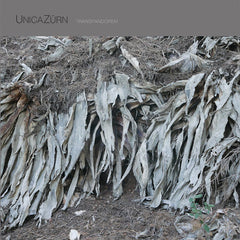
|
UnicaZurn - Transpandorem LP (Touch) Our Review: UnicaZürn is the collaboration between Coil's Stephen Thrower and David Knight of Shock Headed Peters, Arkkon, Danielle Dax's ensemble, etc. While named for the Surrealist writer and artist, UnicaZurn is guided by sages of inner-mind music and the very British astral projections of John Dee via modular synthesis. Thrower's final contributions to Coil were on the lysergic classic Love's Secret Domain, an album that Thrower was at odds with due to its heavy focus on rhythm. His work as Cyclobe (which he conceived after parting ways with Coil in the early '90s) paralleled Coil's obsessions with hermetic knowledge and shapeshifting aesthetics. As UnicaZürn with David Knight, the two follow similar strategies but dial back to an earlier time of kosmische electronic exploration, through the patterned sequencing and charmed electronic invocations harkening to Zeit-era Tangerine Dream and Klaus Schulze. |

|
Various - Bush Taxi Mali: Field Recordings From Mali LP (Sublime Frequencies) Our Review: Given the sheer volume of commercially available music that's come out of Mali (to say nothing of its West African neighbors, and the rest of the continent), one would think there would be a lot more field recordings of street musicians and the sundry other less commercially viable artists who don't attract the attention of the mainstream world music market. There certainly were labels such as John Storm Roberts' Original Music (R.I.P.) which had been hard at work on just that task many years ago. But recent years - what with "world beat" becoming a commercially viable genre targeted to the lowest common denominator - there's been less and less new, raw, unadulterated sounds to be had from the region. The first, in what is hopefully not the last, attempt from Sublime Frequencies to ameliorate this oversight comes from Tucker Martine. And what a nice collection of tracks it is. Recorded in the Fall of 1998 with, if we may say so, some incredibly nice field recording equipment, Bush Taxi Mali is like a really nice panoramic snapshot of music and sounds. The tracks range from miscellaneous street sounds, the dulcet tones of the kora (a bridged 21 stringed lute with a large calf-skin covered gourd resonator), fife and drum music, children singing and clapping, gorgeous acoustic guitar, and an absolutely frenetic wedding celebration with distorted bull horn amplification. |
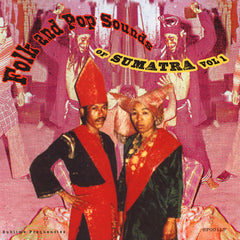
|
Various - Folk And Pop Sounds Of Sumatra Volume 1 LP (Sublime Frequencies) Our Review: Folk And Pop Sounds of Sumatra was assembled from cassettes acquired by the Sun City Girls' Alan Bishop through trade or purchase in 1989 while traveling through Sumatra, which is located on the furthest Western edge of the Indonesian archipelago. This landmass is big (as big as California) and widely unexplored in the audio realm in comparison with its neighboring islands to the East, Java and Bali. The disc begins with the Haba Haba Group in which a male singer is accompanied by flute, two alternating gongs and percussion and secondly by an unknown Sumatran Dangdut (crazy overdriven pop with a heavy Indian film music influence). The most immediately noticeable difference in these recordings from Sumatra to Bali & Java is the overt Arabic influence on the music. As if to admonish us against generalizations, there's a later Dangdut track, with runaway Farfisa organ, pleasant arpeggiating electric guitar and female vocals sounds not dissimilar to the "keroncong" music of The Steps. While the disc may begin innocently enough, the sequencing of the tracks seduces the listener into the strange world of Sumatran music. The very Arabic sounding "Indan g Pariaman" which features a female singer whose melody line interweaves beautifully with end blown wooden flute and some more incredibly nutty buzzing electric keyboard (one can only imagine that the sound is intended to imitate a double reed instrument of old) is moved along by jovial electric bass and Casio-rhythm. The combination of acoustic and archaic electric instruments is shamelessly wonderful. Later an orchestra of sorts, complete with violin, electric organ, bass, drums, female voice leads us down a fragrant path that's oddly reminiscent of a Sun City Girls track. Speaking of which, though this one technically isn't, there are a couple of tracks on here which indeed are songs covered by the Girls, can you figure out which ones? Along with the songs proper included here, there are some great excerpts from dramas. The first instance begins with sweet flute and what's supposed to be a rooster crowing, but emulated by what sounds like an old air raid siren played through a broken megaphone. A melodramatic dialogue ensues between a terribly afflicted female and a stoic male voice. Needless to say, this one comes highly recommended. |

|
Various - Cambodian Cassette Archives: Khmer Folk And Pop Music Volume 1 2xLP (Sublime Frequencies) Our Review: The history of Cambodia's flourishing and rich music scene was - like the greater culture and society of the country in general - cruelly severed in the early seventies by the Khmer Rouge during their "cleansing" program. All our favorite performers were undoubtedly victims of the Khmer Rouge during this period. In the following years Cambodians who fled the country set up communities around the globe and among the other parts of their culture they treasured, the music of these lost performers was not forgotten. Throughout the seventies, eighties and nineties the scattered communities set up recording studios and continued to produce music just as amazing as those lost golden years. Enter Mark Gergis. From 1999 to 2004 Mark diligently scoured the Asian branch of the Oakland Public Library, checking out each and every cassette of Cambodian music produced in the period from the early seventies to the present. Many of the cassettes were unfortunately unlistenable; not merely because they'd been played thousands of times, or left on hot car dashboards, but because they were being slowly bulk erased by the library employees themselves as they would unwittingly pass them over the magnetic security system used to prevent book theft. Even with the best intentions of the public library as a repository for culture, Cambodian music was slowly being erased one cassette at a time. Of course, there was no public outcry. At this point, people had moved on to the newest thing (no doubt something recorded by one person with an electronic keyboard and other MIDI gear). It seems to happen everywhere: recent history is wiped clean for whatever happens to be hot at the moment. So, it was that Mark culled together a collection of songs that are as amazing as they are rare. One thing particularly striking about many of the tracks is that, they include both traditional Cambodian instruments alongside western instruments. There are tracks with Khan (the inimitable mouth organ of Southeast Asia) playing alongside electric guitar (which is often times being played in the style of a traditional Cambodian stringed instrument), saxophone, drums, electric bass and organ. Some of the combinations and bizarre genre bends are truly off the wall – such as the track, unfortunately to remain untitled for now, a proto-metal Cambodian pop ditty featuring echoey and brash female vocals and a Queen-era guitar solo. While there are a few of the more modern pop tunes – of the primarily keyboards and drum machine variety – here, none are of the overly westernized Asian pop that is so ubiquitous these days. There are also 6 tracks of older tunes that were recorded in Phnom Penh between the mid-1960's and the early 70's (one of which was overdubbed by an American operated studio with a drum machine beat.) This is a truly amazing collection. |

|
The Haters - Future Cheers LP (Urashima) "I destroy out of joy, not despair. I don't destroy out of anger. I destroy out of curiosity. I tear things apart to see what makes them tick. I want to take time apart to see what makes it tick-tock. I enjoy destroying everything because I enjoy leaving nothing un-destroyed. My noise acts as a kind of audio account or authentic evidence of this ceaseless, perpetual bittersweet happiness we call entropy." – GX Jupitter-Larsen Our Review: Since the mid-80s,The Haters have gleefully produced their own brand of idiosyncratic and hermetic noise that roughly adheres to the recent statement uttered above by Haters' founder / ringleader GX Jupitter-Larsen. Their declarations of anti-art and the sonic construction of negative space often occur alongside a jubilant celebration of professional wrestling, whose exaggerations of physical strength and brute force become comically theatrical. For The Haters, noise operates in the same absurdist arena as two muscle-bound blockheads smashing metal chairs over each-others heads. The well-curated Urashima imprint has plucked Future Cheer from a Sound Of Pig cassette originally published back in 1986. Future Cheer a mediated construction of slow-motion turntable noise of an hotly amplified runout groove, rapid-fire video-game cut-ups, and a hell of a lot of smashed glass. Jupitter-Larsen (who appears to be the sole pilot of The Haters on this recording) assembles his tape-collages through the start-stop mechanisms, leaving pockets of empty space between the sustained explosion of grit. It's the overly caffinated video-game tape collages aspect to Future Cheers that makes this album such a fucked-up and jubliant piece of sound-art. Yeah, we gotta love this sonic jackhammer that reminds us of that snot-nosed 12-year-old jabbing insistintently on the buttons on the mid-'80s arcade classic Punch-Out amidst a wall of Christian Marclay noise from the same time period. Coming from The Haters, it all makes perfect sense! |

|
The Urinals - Negative Capability 2xLP (In The Red) Our Review: 100 Flowers and The Urinals were essentially the same band, although with the name switch, came a pretty big stylistic shift as well, with the group angling for something more arty and poppy. But truth be told, even as The Urinals, their sound was pretty poppy and arty, more raw, more lo-fi, maybe a bit more, minimal and rhythmic and new wave, But ultimately this collection of the Urinals complete recorded works plays as a sort of rough and raw 100 Flowers demo, which is not a bad thing at all. So many amazing songs here, some serious pop genius on display, making the shift to 100 Flowers not all that surprising after all. "Black Hole" has a serious Yellow Pills power pop vibe, right down to the harmony vocals, and then there's "Sex," which is noisy and punky, but also poppy as all get out, or "Hologram" which might be our favorite track here, a strange bit of muted murky jangle, with tranced out tribal drumming, weirdly crooned vocals, the whole thing so weirdly minor key and mantra-like, and of course "Surfin' With The Shah," which is another surfy, jangly instrumental that for sure foreshadows the impending shift to 100 Flowers. And you might recognize "Ack Ack Ack Ack," frantic and frenetic, and not surprisingly later covered by the Minutemen, it's a strange collection for sure, sonically super varied, everything the group ever recorded, over the three years they were a band (1977-1980), from snotty snarly punk anthems ("I'm White And Middle Class"), to jangly, hook heavy pop punk ("Scholastic Aptitude"), to noisy lo-fi hardcore stomps ("Go Away Girls"), to twisted jangly sing-alongs laced with wild freakouts ("I Hate"), to angular post-punk crunch ("Presence Of Mind"), to organ driven surf-garage ("I'm Like You"), to reverby twang flecked jangle ("Orange Anal Sin"), and so much more. There are a ton of live tracks too, including a Soft Machine cover (!), as well as an acoustic version of "Sex" which had us thinking of the Dead Milkmen! WAY recommended, especially if you dug that 100 Flowers reissue, odds are you're gonna love this too! |
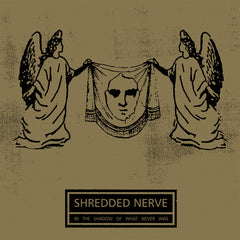
|
Shredded Nerve - In The Shadow Of What Never Was LP (Chondritic Sound) Our Review: There's a specific act of American born terrorism which serves as the conceptual framework for this meditation on violence through sounds. Back in 1983, David and Doris Young took 153 people hostage at a school in Cokeville, Wyoming; yet their gasoline bomb unexpectedly exploded, severely injuring Doris. David aborted their plans to start a revolution by ransoming the schoolchildren for two million dollars by killing his wife and himself, leaving behind a number of questions as to why this tragedy had to happen. David Young did leave behind a convoluted manifesto entitled "Zero Equals Infinity", along with a checkered past of mental illness from both him and Doris. Shredded Nerve uses this gruesome chapter of American history as a subject to dwell and ruminate upon for this LP of gnarled electronics, nightmarish tape-loop hypnogogia and dystopian metallic klang. The restraint of these recordings is noteworthy given how easy it would be to take this to a theatrical extremes, positing the structures and compositions somewhat close to the realm of Small Cruel Party or the early convolutions from irr. app. (ext.), if Waldron were reinterpreted by Aaron Dilloway. Another exceptional document from Chondritic Sound! |
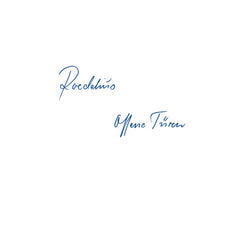
|
Roedelius - Offene Turen LP (Bureau B) Our Review: Offene Turen (Open Doors), Roedelius's little known fifth album from 1982 and is definitely not like the others. Often considered his "experimental" record, this album was completed shortly after the Cluster record Curiosum. It sometimes seems as if he wanted to make a record through the eyes of his more taciturn partner, Moebius. While it doesn't quite have Moebius's way with mechanical musical calibrations, the vibe is more stark and atmospheric and the closest we've heard any of the Cluster clan come to sounding cinematically proggy in the vein of John Carpenter and Goblin. Lots of church organ sounds and bell tones with an occasional glimpse into Roedelius's classical romantic side. Definitely one of the weirder records in the Cluster canon, there's lots to love, from songs that are seriously spooky and to other tracks that are charmingly naive experiments with the newest (at the time) digital tech. |
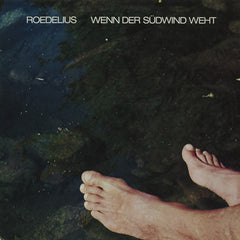
|
Roedelius - Wenn Der Sudwind Weht LP (Bureau B) Our Review: Roedelius's fourth solo record from 1981 has obvious connections to his first record Durch Die Wuste as evidenced from the similar album covers involving feet and water. But while his first record was a head-first dive into exploring the palatable possibilities of mixing acoustic and electronic instruments, Wenn Der Sudwind Weht is all about the tranquil relaxed after-glow, drying off in the afternoon sun. Limiting the instruments to just organ, synthesizers and piano, Sudwind is surprisingly rich and layered and arguably the most stunning of his solo records, reminding us of the pastoralism of Popol Vuh and early Deuter, but never succumbing to new age music's typical lack of focus. In fact, this may be the most essential of the Roedelius solo records. Highest recommendation! |

|
Raime - Quarter Turns Over A Living Line 2xLP (Blackest Ever Black) Our Review: This duo of Joe Andrews and Tom Halstead, aka Raime, have conjured up this strange and mysterious slab of dark brooding black energy that's equal parts minimal electronica, bleak black ambience, abstract techno and avant sound design. Casting electro-doom plod as stripped down electronic skitter Raime remind us of Bohren Und Der Club Of Gore, creating heaving slabs of rumbling crumbling blackened heaviness. At the same time, there's an industrial menace that could sound like Wolf Eyes if they were commissioned to score for an orchestra. The mutant strains of dub and jungle transform into creeping expanses of sinister stutter and stretching dubstep bass that warble into haunting sprawls of cinematic menace. The record almost plays out like a soundtrack or score, the various pieces blurring into one another that are still sonically linked through a unifying blackened noise-drone. Distant keening melodies are laced with shards of grinding glitch and underpinned by ominous chordal thrumming. The vibe is dark and doomy, subtly rhythmic and a little bit dubby. Quarter Turns Over A Living Line remains a classic album of superbly rendered black-dub, while also being harsh and inhospitable. |

|
Roy Montgomery - Q: Transient Global Amnesia LP (Grapefruit) Standalone LP release. Read our review of the box set right here. |
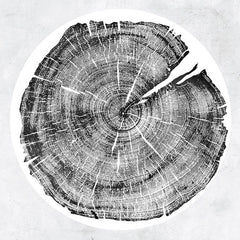
|
Roy Montgomery - M: Darkmotif Dancehall LP (Grapefruit) Standalone LP release. Read our review of the box set right here. |
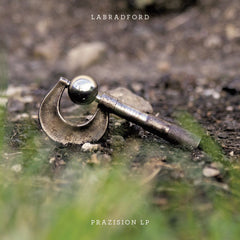
|
Labradford - Prazision 2xLP (Kranky) Our Review: Originally released in 1993, Labradford's Prazision marked the inaugural release for Kranky, setting the table for so many drone-rock and indie-ambient composers. Yes, it remains gorgeous blend of shimmering ambience, fractured folk, minimal pop, sculpted noise and experimental soundscapes that seems to be constantly in flux. The opening track is the perfect send off, as we depart on our journey of dark billowy drones, keening distant high end streaks, a strange almost mechanical non-rhythm hovering in the foreground. Beneath it all, Labradford ripples deep dark sonic swells with a muted mysterious melody, drifting weightless in a hazy expanse of underwater sunlight. The second track introduces an actual song with simple strummed guitar and crushing melancholy Jandekian / sadly vocals, over a haunting multilayered drone. The next track furthers the abstract song structure, even more druggy and unhinged, vocals buried in a murky muddy swirl of effected guitars and sprawling minor key melodies, reminding us of the late period Spacemen 3 or a way druggier Galaxie 500. In fact the whole record has that vibe, sort of wasted, bleary eyed, druggy, dreamy, drifting, on the verge of simply fading away, or floating into the sun to be consumed and turned to ash. The rest of the record is balanced pretty evenly between Velvets style lo-fi downer pop and thick mesmerizing slabs of slow shifting glacial whir. Absolutely gorgeous and so forward thinking, as a dark and doleful experimental abstract ambient pop masterpiece. For the 2013 reissue, one of the tracks from Labradford's first 7" is included and with updated artwork. Totally recommended. |
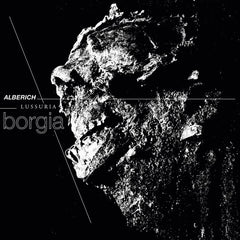
|
Lussuria / Alberich - Borgia LP (Hospital Productions) Our Review: Borgia is the first collaboration between Lussuria and Alberich, and is much greater than the sum of its parts. These two artists are regulars for Hospital Productions - the powerhouse label of brutality through sound as curated by Dominick "Prurient" Fernow. Both Lussuria (aka Jim Mroz) and Alberich (aka Kris Lapke) are New York based death-industrial projects, with Lusurria hedging towards the visceral gloom of Atrax Morgue and Alberich taking a heavier, rhythmic approach. In 2016, Hospital issued the a very tiny pressing of cassettes for these recordings as a bonus offering to those who purchased the 20xCD Skin Crime boxset directly from the label; and now Borgia receives a proper, stand-alone edition on vinyl. A heavy, oppressive fog permeates Borgia's dark ambient passages in tracing a topography of anxiety and dread. Much of the work embraces a sound design of sustained tension as previously authored by Inade and Lustmord, with locomotive rhythms punctuating these uncannily bleak manifestations of end-time atmospherics. "Alabaster" gravitates to the hypnotic sequences and theatrical gloom that's often found in the glacial electronics from Varg as well as much of Fernow's imperial, post-noise explorations from his late-period works. |
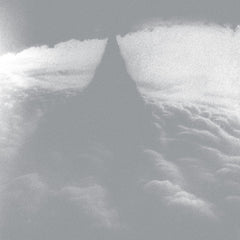
|
Lawrence English - Cruel Optimism LP (Room40) Our Review: Sonic density is a key component to the blustery ambient-noise compositions of the Australian Lawrence English. His recent catalogue of recordings favorably parallels that of Tim Hecker's cathedrals of sound and haunted evocations. Liminal droneworks such as these lend themselves to open-ended metaphor and allegory, yet English has been focusing his recordings through the lens of critical theory. For Cruel Optimism, the conceptual framework is defined through his interpretations of the book of the same title by theorist Lauren Berlant, whereby she maps out the conditions in the current geopolitical systems that have lead to the failures of social-democracies to deliver what they promise. These fantasies, desires and fetishes toward money, status, career, etc. are ultimately trojan horses that will undermine those who put all their faith into such objects. Couple this with ideas about trauma and crisis as being permanent states of being, rather than disruptions from the ordinary, and the context in which English applies such concepts is deliberately turbulent. Both inviting and threatening, Cruel Optimism emerges as undulating grey swathes of sonic smoke and fog, through which shadowy rhythms pulse and blindingly brash crescendos erupt. He cites both Swans and My Bloody Valentine as inspirations to the aesthetic choices he made in constructing a visceral, physical sound through densely compressed layers of harmonic distortion. Those precursors shouldn't be taken synonymously with English's vernacular, but rather as a similar methodology through his ability to sculpt his drone/noise into a dialectical aesthetic that is majestic, awe-inspiring and beautiful. |
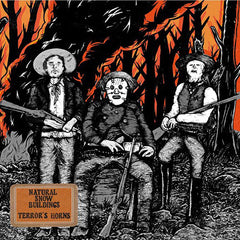
|
Natural Snow Buildings - Terror Horns LP (Ba Da Bing) Our Review: There's long been a haunted thread that traces through all of the work from Natural Snow Buildings, the French duo of Mehdi Ameziane and Solange Gularte, whose long-form tangles of ritualist drone-rock minimalism and sprawling, opiated psychedelia harks back to International Harvester, Flying Saucer Attack and Kemialliset Ystavat. Here on Terror's Horns, Natural Snow Buildings plumb the depths of an emotional gloom and shuddering despair with this epic, cinematic album. The two have long-specialized in expansive tracks of shimmering guitars, woodwinds and bowed instruments that could be psalters, zithers and/or violins, all of which blossom into sublime masses of droning impressionism. On Terror's Horns, Natural Snow Building engage in a sound far more elegiac and funereal and heavier than heard on any of their previous recordings. The freak-folk transcendence of NSB still will embrace the unsettling falsetto of Ameziane and the percussive clatter of Gularte, with the swirling psychedelia tumbling downward in lush cinematic collapse, with heavy minor-key chords and reverb saturated rhythmic plod providing plenty of parallels to the early days of Barn Owl and the latter days of Earth. Beautiful as always, these Natural Snow Buildings, if much darker than in days gone by. |
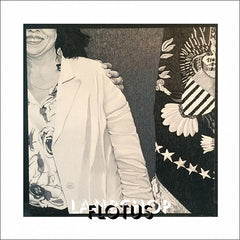
|
Lambchop - FLOTUS 2xLP (Merge) Our Review: A quarter century into its history, Lambchop is still finding new ways to remain unclassifiable. With new album For Love Often Turns Us Still (officially FLOTUS in reference/deference to the First Lady, an imagined one it seems as that sure isn't Michelle on the cover next to the Presidential Flag), Kurt Wagner and his revolving-door cast venture into previously uncharted territory. Gone are the string sections and gently strummed acoustic guitars. Gone, in fact, is almost any perceptible influence from Wagner's homebase of Nashville and his resultant idiosyncratic take on countrypolitan – something which had been a consistent through line in his work until now. All of that has been replaced by drum machines and synthesizers. Before you fret that FLOTUS is an unfortunate trip back in time to the early aughts and the so-called "folk-tronica" genre that has rightfully been forgotten, remember that this is Kurt Wagner and his inscrutable songwriting and that hushed voice can make things work in spite of themselves. There is some glitch on here reminiscent of the early 2000s IDM, but there's also sounds of New Order, krautrock, mid-to-late '80s Steve Roach, the Hearts of Space catalog and even the dentist's office side of R&B. Bookended by two 10+ minute long tunes, the opener is maybe the most reminiscent of anything Lambchop has done in the past in that it is at heart a rock song, while the closer "The Hustle" (clocking in at 18 full minutes) might be the least Lambchop-y song in the catalog. It begins with a Roach and Hassell-esque intro, before going full motorik krautrock, ending at Van McCoy if Van were on Quaaludes. Lambchop has built a career on being willfully hard to peg and the only thing that is certain with FLOTUS is that it's the least "Lambchop" Lambchop record yet. |
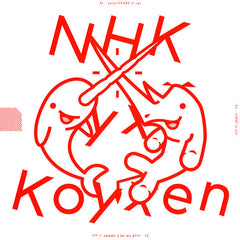
|
Nhk Yx Koyxen - Doom Steppy Reverb LP (Diagonal) Our Review: Any takers on offering forth a pronunciation on the incomprehensibly tongue-twisting moniker NHK Yx Koyxen? Maybe a certain method acting is required to bend the tongue around those syllables, by swallowing some equally unnamable chemical compound where tunnel vision and heart palpitations are the minor side-effects to the libidinal blur of a pharmacologically ecstatic head-rinse. Such is the sound of Doom Steppy Reverb, an acid-jacked polyglot of techno mutation, schizoid frequencies, crashed hard-drives, and breakbeat swagger. The dude producing all of this is Kouhei Matsunaga, who has worked with Autechre and Merzbow on occasion; and NHK Yx Koyxen feels very much like an exaggerated recombination of something that Gescom might have cranked out in the early Skam days. Heady angular syncopations drips with teeth-clinched flanges and dilating filter-sweep modulations that pitch the linear rhythmic swing of the crisp hi-hats and the sodden bass-bin thumps into low-orbit near misses between two careening deep space objects. Watch out! |
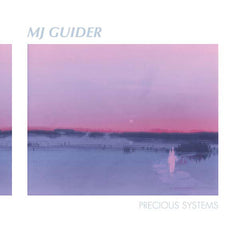
|
MJ Guider - Precious Systems LP (Kranky) Our Review: Having published Tim Hecker, Labradford and Grouper, Kranky makes a great home to the blissed and blurred music of MJ Guider. Once the pseudonym for Melissa Guion's solo work, MJ Guider has morphed out into a trio, transmitting an ethereal drone-pop rutted from elongated song fragments and shoegazed deconstructions. The immediate references to Tropic Of Cancer and HTRK softly bloom amidst the MJ Guider's soporific take on skeletally post-punk basslines and cleanly thumped drum machines, giving Precious Systems a gloomy almost goth bent. Even so, all of the angles and edges have been melted and blurred, so that the arpeggiated guitars and bass may have begun in some fashion near Siouxsie & The Banshees but sound as if they's sunk several thousand leagues deep into the sea. |

|
Gunter Schickert - Kinder In Der Wildnis LP (Bureau B) Our Review: Originally released as a cassette tape in 1983, the material on Kinder In Der Wildnis consists of disparate DIY recordings drawn from Schickert's archives, so it's a bit more varied than either of his earlier albums, though if you've heard those, you'll recognize right away that you're back in Schickert's sonic realm, one of organic field recording atmospheres and trance-inducing minimalist pulsations. But something about this is so much more nervy and dark, and more "rocked out" too at times. Maybe it's the influence of the Neue Deutsche Welle, but we're still talking krautrock. Even though Schickert does everything himself (guitar, tape, vocals, percussion, trumpet), it somehow sounds like a whole band, and that band sounds like Amon Duul II and Faust trapped together in a bunker, jamming endlessly in the middle of the night. The music is dark and claustrophobic despite the environmental nature sounds that Schickert likes to weave into his recordings. There's the children's voices on here too (his daughter sings on the jittery title track) but that's in stark contrast to the druggy darkness of so much of this. Tracks like "Rabe In Der Nacht" and "Hollentanz" are a dense lo-fi mesh of percolating beats, wailing psych guitar, and sound FX. Bird twitter-y field recordings (and crazy crow-like cawing from Schickert himself, we assume) meet overdubbed layers of chanting vocal parts, including more animal-like cries, in the hallucinatory mix. Swirling drones of synth coalesce into hypnotic throbbing rhythms, over which lilting keyboard motifs hint at the likes of Goblin. Yep, it's a freakin' great record all right. Trippy and weird and psychically round the bend. In other words, super satisfying. |
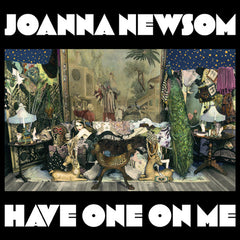
|
Joanna Newsom - Have One On Me 3xLP (Drag City) Our Review: Have One On Me is the magnum opus, triple album from Joanna Newsom, finding her as visionary, intimate and extraordinary as ever! She has earned and deserved the right to require her listeners to luxuriate in her sounds, to have the patience and to focus their full attention on her record while listening. This isn't the sort of record you just casually throw on in a room full of people and quickly make a judgment about, it's a nuanced, dense and meticulously crafted sprawling work that requires a little dedication. While she will always be known for her extraordinary harp playing, Have One On Me shows her integrating the harp more seamlessly with other instrumentation. There are plenty of piano, moments of sweeping soundscapes and commanding drums; but not to fear, the majestic harp still shines through. While initial reviews keep throwing around Joni Mitchell comparisons, we don't feel that at all; instead we do feel a huge Kate Bush influence at work, much, much more so than any of her previous releases. The way in which the songs are crafted in such an intimate manner, and the surprise moments of a song when an eruption of sound comes when least expected. Being that many of us here are huge Kate Bush admirers, we love seeing someone follow in her footsteps with equal intelligence, sophisticated word play and deep running emotion. |
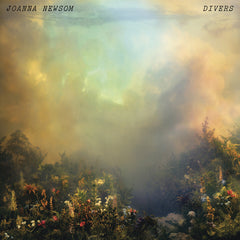
|
Joanna Newsom - Divers 2xLP (Drag City) Our Review: It's impossible to listen Joanna Newsom casually, and you can never rely on first impressions with her music. In fact as much as some of us here deeply love her albums, there is always a resigned feeling of an endurance test at first, that slowly lets up through repeated listens, until it wears in on you quite nicely. Once comfortable in its structure, its labyrinthian nuances set up like traps of discovery and the overall effect is like a garden just coming to bloom. Divers sits somewhere between her last two records, a couple of long jewel-laden epics, but mostly shorter and more digestible songs. Not as rife with emotion and symbolic as Ys, but more complexly intricate than the '70s California song cycle of Have One On Me. The hooting sound of an owl opens and closes the album suggesting an autumnal shift in mood. Indeed Divers reads like an album to be played over a long night, from dusk to dawn. For starters, the piano (as well as Fender Rhodes and harpsichord) dominate. Her signature harp doesn't appear until the third song and though it has a strong presence on Divers as a whole, Newsom seems to want to appear less attached to it, or showcase other talents instead, in which there are plenty here. The orchestrations are incredibly arranged without overwhelming the songs, and her voice and song structures are definitely moving more into Kate Bush territory. It may also be the first time she has tackled a cover, the traditional folk song, "Same Old Man" sung most famously before by Karen Dalton on her second album, and she delivers it beautifully. |
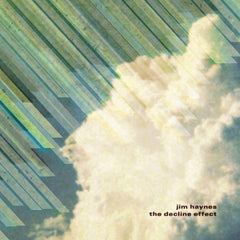
|
Jim Haynes - The Decline Effect 2xLP (Helen Scarsdale Agency) Our Review: Another amazing excursion into the sound of decay from Californian sound artist Jim Haynes, this time in the form of four sprawling sidelong epics. Each is its own self contained soundworld, culled from various field recordings, vibrating strings and other sonic errata. It's easy to get lost in these strange lands of decay and declines. The A side was originally a commissioned soundtrack for a pair of films that screened at the Hauntology exhibition at the Berkeley Art Museum in 2010. The smoldering slow moving "Ashes" does evoke a certain haunted, sonic dread. The core of the sound is of course the drone, but that drone is pulled taut, and the sound seems to fray as the track progresses, shedding sonic detritus in the form of fractured melodies, strange clicks and muted buzz. At times, this begins to sound like perhaps Haynes' most overtly musical record. Yet, that musicality is eventually picked apart and the remaining elements litter the landscape like bits of some sonic wreckage. The sound is truly beautiful, whether a deep sonorous drone or a lush layered stretch of celestial shimmer. Named for the performance space at which the piece was debuted, "Terminal" is sourced from field recordings of geysers and thermal vents, playing out like some obscure scientific document, unearthed from some dusty box filed away in a warehouse or chronicling a lost expedition. The sound blossom in texture and depth, as if more sounds were introduced and then layered or woven into one another, streaked with a blurred hiss. The white noise of eruption balanced by the hushed murmur of calm before and after. Side three finds Haynes exploring radioactive decay. We'd like to think these are the recordings of Strontium or Uranium, with the radioactivity causing the tape to warp and curdle; but in fact, it's more likely an assemblage of intercepted short wave broadcasts with lush chordal swells washing over strange effects, muted glitches, lush tones and surprisingly dreamy overtones. Geiger counter like clicks coalesce into an almost-rhythm, while the surrounding sounds seem to lose cohesion, all bleeding into one another and drifting like blackened clouds of whir and thrum. And finally, the last movement in this crumbling sonic tetraptych is the wire recording sourced "Cold", in which Haynes captures the sympathetic buzz of wires and plays them like some sort of abstract harp within a huge stone room, with metal wires running across in wild tangles. Haynes at the center, wildly bowing and striking wires, creating this delicate crystalline symphony, another blurred buzzscape, that peppers the lush layered shimmer, with creaks and clatter, skitter and crunch, but those errant sounds are quickly subsumed by the warm whirls of hushed bleary drift and an unexpected eruption of caustic blown out noise, a psychedelic squall that acts as the record's coda, before the inevitable decline, the sound slipping into nothingness. Gorgeous stuff. |
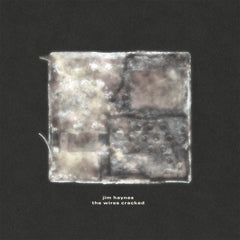
|
Jim Haynes - The Wires Cracked LP (Editions Mego) Our Review: Jim Haynes offers his first album for the esteemed Editions Mego label; and like releases past, Haynes immediately delves into a world of decay. As a visual artist, he often states that his art consists simply of 'rusting things,' and rust is definitely a large part of his visual aesthetic. It's also evident that his goal is similar in the music making process in taking sounds and corrode them, treating them in such a way that they crumble and revealing whatever mysteries lurk within. Those subsequent sonic mysteries are also decaying, as if the process was akin to nesting dolls, layer upon layer of sound, peel one away and fall deeper into the abyss, one that seemingly has no termination point. The source sounds here are quite varied as always (most notably this time around a particle accelerator), but Haynes tends toward the greys and browns, static and hiss molded into streaks and shimmers, melodies subverted and melted down into textures, the opening track on The Wires Cracked (another nod to decay), begins with a hushed rumble, an accretion of thrum and hum, pocked with bursts of static, and shards of granular buzz. As the track progresses, the melodic component, becomes more pronounced, but subtly so, still merely a show beneath Haynes' churning windstorm of sound, a blurred, muted squall that manages to whip up billows of caustic noise, but then tamps them down into something much more malleable. The sprawling "X-Ray" lays down a field of field recorded crackle and spatter, foot steps on snow, broken glass, hard to say precisely, but that gristled crackle hovers beneath an opening blast of noise, before giving way, to a hushed creep, a distant keening shimmer beneath a series of near microscopic sonic events, headphones most definitely required, a hazy, gauzy expanse of windblown emptiness, the sonic approximation of a wintery tundra, transformed into sound, and again, wreathed in Haynes's slow shifting textures, and peppered with insectoid like chitter. The track seems to seesaw between thick, billowing soft noise swirl, and breathless minimal near nothingness, tense and intense, a sonic travelogue through some lost land, or perhaps as the title infers some strange network of inner pathways, not hard to imagine being shrunk down, injected into a human body, and traversing a series of blood vessels and capillaries, the previously silent sound of the body's inner workings, now rendered terrifying and overwhelming, an organic machine pulsing and throbbing, the listener lost in a world of darkness, with only these mysterious sounds as proof that the listener still exists. The whole of the second side is taken up by the near 18 minute "November", which unfurls like ghosts in the machine, deciding to dismantle the machine before our very ears, again, the sound is seemingly being pulled apart, Haynes there to chronicle its gradual decay, the most active of the three tracks, erupting into huge droning tangles of crunch and crumble, wrapped in keening high end shimmers, occasionally dipping into serene stretches of bleary ambience, the eye of the sonic storm as it were, the sedges of the sonic field still corrosive and crumbling, lending an air of impending doom to these otherwise tranquil passages, but the hammer never falls, instead, the sounds gradually dissipate, the clouds of noise clearing, revealing a hushed landscape of whistle like tones, smoothed out into a blurred susurrus of streaked shimmer, pocked with what sounds like the rasp of stone on stone, a final moment of decay, before the record itself crumbles into silence. |
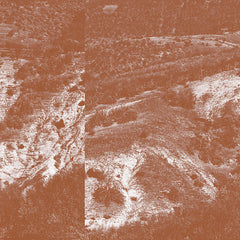
|
John Chantler - Which Way To Leave? LP (Room40) Our Review: A continuing presence on the esteemed Room40 label, John Chantler is an Australian electronic musician whose globetrotted his way to Tokyo, London, and now Sweden, where he's ventured on more than one occasion into Stockholm's historic EMS. The extended layover in Stockholm may very well be by design as his work has now come to embrace the spartan, ice-floe poetics of Rune Lindblad or Gunner Moller Pedersen (NB, this latter reference is a Danish composer, but there's a lot of very lovely similarities between Chantler and Pedersen). Rhythm had played a considerable part of Chantler's earliest work both on Room40 and in his work drumming for the Tenniscoats, but those steady pulses have dissolved within his de-centered abstractions of modular synth patchings. His burbling, overlapping investigations through the folds and rhizomes of his electronic pixel bloom and spiralling filigree will form as similarly atomic constellations that Eduard Artemiev would coax from the ANS synthesizer. Yet at other times, Chantler would coax that humanizing grit of pink noise which Fennesz extracted from his guitar on his first fruits for Mego. |

|
J. Dilla - The Shining 10x7" (BBE) Our Review: We have the feeling that even though Jay Dee is gone from this world that we will continue to see new releases of his work. Sort of like a hip-hop Arthur Russell, or a hip hop... umm.. Tupac? Anyway, the man was a mad alchemist, constantly working and experimenting. We predict that even earlier records he produced such as A Tribe Called Quest's Beats, Rhymes And Life and De La Soul's Stakes Is High – maligned when they were originally released – will soon be greatly reconsidered in the context of Dilla's finally much-respected legacy. And that's a good thing, because we'd hate to think that The Shining would be viewed as Jay Dee's crowning achievement. Working on this at the time of his death, his friend Karriem Riggins stepped in to finish the job, and while there is some great production work, it feels like more of a tribute record than a proper album. A number of A-list rappers including Common, Busta Rhymes and Guilty Simpson guest on most of the tracks too. While we like this less than we liked Dilla's previous effort, Donuts, (largely because it was instrumental) we think fans of Jay Dee will find much to love on The Shining. |
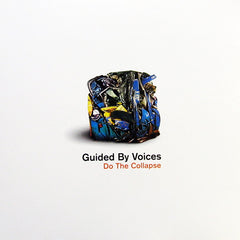
|
Guided By Voices - Do The Collapse LP (TVT) Record Store Day 2015 release. Limited edition orange vinyl. Our Review: Robert Pollard's quest for rock stardom takes another great stride forward by joining the ranks of Ric Ocasek produced groups; Bad Brains, Suicide, Weezer. Beside the extra notches in Ric and Robert's belts, this is a great sounding GBV record. Gone are the 30 song albums, gone are the 15-second pop gems and the unfinished fragments, and in their place are 16 pretty polished (for GBV) and pretty excellent pop songs. |
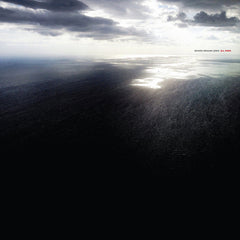
|
Edvard Graham Lewis - All Over LP (Editions Mego) Our Review: One of two concurrently released albums from Wire's eccentric bassist / vocalist Edvard Graham Lewis. Even through the lens of Wire's situationist post-punk and avant-pop eccentricities, the solo and side projects for Lewis were almost always well beyond the scope of Wire's amorphous signature. Dome was an early investigation into proto-electronica and disjointed industrial bricolage, and then there was the contorted romanticism of '80s balladeering through the under-appreciated He Said moniker. Where the companion album All Under is the more abstract and (slightly more) unconventional, All Over finds Lewis returning to his capacity for penning some brilliantly weird avant-pop numbers. The overall feel of the album is sunk in a liquid narcosis that runs parallel to the blurring miasma of shoegazing; but Lewis doesn't drown his work in reverb. It's a great trick to build something hypnotizing though a skeletal synth & guitar pop context. "We've Lost Your Mind" girds a motorik click track of Oval-like glitching with a minor-chord jangle that harkens back to A Bell Is A Cup Until It Is Struck era Wire if it were recorded today. "The Start Of Next Week" is a fabulous piece of dark techno that could fit somewhere near Silent Servant or Surgeon. The dubbed-out tropical ditty "Quick Skin" pools Lewis' vocals into layers of overlapping delay patterns with a tinny rhumba and chicken-scratch guitars channelling the spirit of Brian Eno's Another Green World, albeit with a darker color palette. Other tracks do push the abstraction with a few tracks sounding similar to what :zoviet*france: would make if given the challenge to make a 'pop' record circa 1988. Like All Under, this is brilliant. |
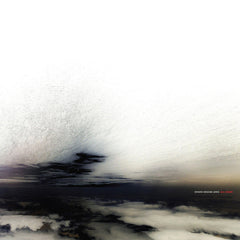
|
Edvard Graham Lewis - All Under LP (Editions Mego) Our Review: One of two concurrently released albums from Wire's eccentric bassist / vocalist Edvard Graham Lewis. Even through the lens of Wire's situationist post-punk and avant-pop eccentricities, the solo and side projects for Lewis were almost always well beyond the scope of Wire's amorphous signature. Dome was an early investigation into proto-electronica and disjointed industrial bricolage, and then there was the contorted romanticism of '80s balladeering through the under-appreciated He Said moniker. There were also plenty of one-off collaborations with various Swedes throughout the '90s (H-A-L-O, He Said Omala, Hox, etc.) and one hell of a great collaboration with John Duncan. That Duncan / Lewis album immediately jumps to mind upon first listens to All Under, a compendium of soundtrack work and ephemera recorded at various times over the past 13 years. The eerily paranoiac blips of phasing shortwave radio broadcasts fire across the first two tracks of All Under, both of which are variations on work composed for a multi-channel video piece by Gunilla Leander. These electrical flurries, flecked with irradiated ash and attenuated glitches, are shaped from the droning data-streaming into mercurial melodic ambience that wouldn't be out of place on Aphex Twin's dreamtime masterpiece Selected Ambient Works Volume II. "The Eel Wheeled" again reflects similarities to that Duncan collaborative record, with Lewis slowly reciting one of his bizarre assemblages (which also form the basis for Wire's lyrics, even those sung by Colin Newman). His Burroughs / Gibson / Dick inspired sci-fi fragmentation with his baritone voice elegantly sitting amidst his discordant collage, projecting an ominous sound of a crumbling society being sucked into its virtual self. The finale is another soundtrack piece "No Show Godot," draping wisps of arctic noise onto a soft rhythmic chatter as Lewis slowly unveils a blossoming radiant drone that terminates at the unveiling of a long-form drone-pop number for ritualized pulse, blurs of fourth-world vocal exoticism, Sub-Saharan cinematic nods, and Lewis commanding a subdued industrial mantra akin to an opiated version of Muslimgauze. Like All Over, this is brilliant. |
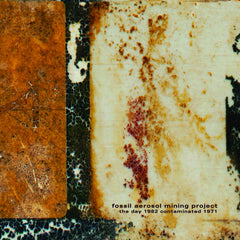
|
Fossil Aerosol Mining Project - The Day 1982 Contaminated 1971 LP (Helen Scarsdale Agency) Our Review: We've long cited the metaphor of sonic exhumation in describing the proponents of a ruined sound design. How often have we likened a marvelous hauntological recording to sound as if it were lifted from the bottom of a bog, still dripping with bunker fuel and vegetal rot as the author feeds this (fictionally) exhumed tape through the reel-to-reel in order to captured the woozy, decayed sounds transformed through time and chemical decomposition. In the art of the Fossil Aerosol Mining Project, we have exactly that process. Well, not the swamp-rot seepage per se, but the accumulation of time-ravaged material from abandoned drive-in movie theaters using the scratched, crumpled, and torn bits of the optical soundtrack from 16mm film. This semi-anonymous outfit has been scouring the forgotten sites of the American rust belt for such material over the past three decades, but only recently have they received any notoriety for their work. After a couple of high-profile collaborations with the like-minded :zoviet*france:, Fossil Aerosol delivers this complete masterpiece in The Day 1982 Contaminated 1971 for their first solo piece of vinyl. Fossil Aerosol snatches bits of dialogue and overly maudlin orchestration from that source material, alongside the various dropouts, abraded noise, and tactile grit; and all of this gets tossed into an overlapping network of tape loops, complete with squiggled machinations, dub accumulation, and uncanny hypnosis. The process of building each track emerges through negation and erasure as much as it is in the accretion of layered sound upon sound. What remains are the ghosts from the process, not only sonically but also allegorically pointing very specifically back to the unearthed 16mm film. The presentation for all this disintegration, rupture, bleaching, shattering, debris and lagged delay follows the ley lines of the American psyche - entangled notions of grandeur, ignobility, spectacle, spirituality, and insecurity. Fossil Aerosol take on the part of detached archeologists for the American wasteland, with their aestheticized miasma and dislocation imparting nuanced readings into America's forgotten recent past. Demdike Stare and The Caretaker may have the entire history of the British empire to excavate for their sounds, but Fossil Aerosol's hauntings are so much more eerie given the proximity in time and space. Without a doubt, this is one of the best experimental / drone-on records of 2015. |
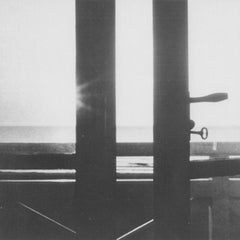
|
Ekin Fil - s/t LP (Students Of Decay) Our Review: We were introduced to the work of Ekin Fil via a super limited cassette released on Root Strata a couple years back. Now, Students Of Decay have released the first proper album, and it's a jawdroppingly gorgeous piece of slumbering drone-pop. Ekin Fil is the solo work of Turkish songstress Ekin Uzeltuzenci, who quietly waltzes behind reverberant blurs and nocturnal driftscapes. There are songs that slip in and out of existence amidst the foggy production surrounding her voice and acoustic guitar; and if you maybe think this sounds an awful lot like the work of Liz Harris, you wouldn't be that far off. Uzeltuzenci has described her work is a means of escape from the mania of her native Istanbul; and it's not just a therapeutic salve of cathartic torpor for her, she invites the audience to follow along in these dreamy, droney pieces. Like that cassette on Root Strata, this eponymous LP is quite an enchanting journey. She hypnotically strums her way through dour avant-folk songs whose melodies are entirely enshrouded in gauzy shadows, ghostly ectoplasm, and cavernous echo. No sharp edges whatsoever, but some of her songs can delve much further into the spooky than Grouper ever has. For example, there's the rocket-engine roar which girds her gasping track "Sea Holly" and the chords of "On Vanity" recall the desolate, acoustic balladeering that Bauhaus would sprinkle throughout their glam-goth bombast. Certainly for fans of Je Suis Le Petit Chevalier, The Slaves, Vestals and Grouper. |

|
Fennesz - Becs LP (Editions Mego) Our Review: Aside from a couple of respectable collaborations and some soundtrack work, Christian Fennesz hasn't released a proper solo album since the album Black Sea, which came out on Touch back in 2008. On his 2014 album Becs, Fennesz returns to the label that introduced him to the world, in Editions Mego; and he pretty much continues along the same path that he set for himself on that last album he recorded for them - the much lauded Endless Summer from 2001. That was a fractious record of polygonal melodies bathed in a candy-crush fuzz of pixelated, shoegazing blur, always alluding to the sunkissed glow of the California Dream, whatever that may be. Becs may not have the advantage of following up one hell of a single by Fennesz (in the very late '90s, he covered The Beach Boys and The Rolling Stones), whereby he contextualized his sonic dislocation within the lineage of rock'n'roll and all of its mythologies of dissent, rebellion, sex, and whatnot. Yeah, it's a tough act to follow; but Becs is a wildly adventurous album with a substantial parity when it comes to the risk/reward equation. A heavily flanged, blindingly bright corona of digital treatments surrounds the Fennesz' guitar sound at the album's introduction, with all of the soft melodies buried in twinkling electronics and mirrored refractions. Fennesz follows this with a detuned alarm-call pulse that forms an insistently crawling rhythmic structure blasted with a malleable distortion, which in turn he counterpoints with a gorgeous, cathedral drone of sustained harmonics. An incremental retinal burn of guitar distortion shapes the brilliant track "Liminality" built upon a beautifully bittersweet, slowcore guitar chord whose roots lie in Slint, Codeine or maybe even the Durutti Column. Sparkling ambient passages beget discordant piano treatments akin to a computer-cracked Angelo Badalamenti which in turn beget more blossoming noise. Fucking brilliant. |
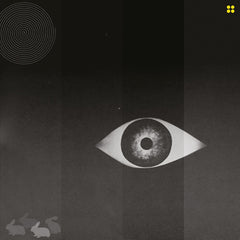
|
Death And Vanilla - s/t LP (Fire) Our Review: Death And Vanilla are a Swedish haunted-pop duo who have found themselves caught in the vortex of retro-futurism circa 1969. On the one hand, they've got a good grip on the baroque psychedelia of the United States Of America, Free Design and even some of the more woolly tracks that Jane Birkin and Serge Gainsbourg produced. On the other, they're keen on the whole library music phenomenon augmenting their songs with plenty of sparkling synths, crackling radiophonic samples, EVP recordings (yes, that is Raymond Cass coming through!) and tripped-out-to-space production tricks that would be right out of the Daphne Oram and Delia Derbyshire playbooks. There's even a track on this album called "Library Goblin"! If you might think all of this seems like the same strategy that Broadcast employed on their highly acclaimed collaborations with The Focus Group back in 2009-2010, you'd be pretty spot on. Even Death And Vanilla's Marleen Nilsson sounds an awful lot like Broadcast's Trish Keenan, with her breathy delivery and unexpected melodies which soar above the monochromatic lullaby of many of the songs. As sacrosanct as it may seem, Death And Vanilla rivals Broadcast in songwriting ability. Their cinematic pop gem "Cul-De-Sac" should be in the running for poptune of 2012 for sure with its complex interweave of harpsichord, vibraphone, fuzzed guitar, strutting basslines and shuffling rhythms all driven by the vocal harmonies. This transitions rather deftly into the far more experimental avant-pop number "Sombambulists" which drifts aptly towards a dreamy headspace of loping basslines and percolating synths all bathed in sound-dissolving reverb. The filmic references also abound on tracks like "The Unseeing Eye" and the aforementioned "Library Goblin" as sublimely revisionist '60s pop numbers with bubbly vibraphones and seductive vocals amidst electronic filigree and charming synth blorp, before disintegrating into an otherworldly interlude of ethereal radio noise and cosmic vibrations. As such, it's a pretty irresistible album for any fan of Broadcast, Ghost Box and Stereolab. |
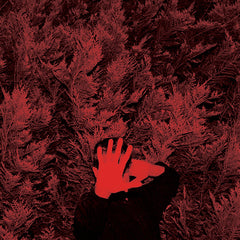
|
Cory Hanson - The Unborn Capitalist From Limbo LP (Drag City) Our Review: Hanson is the frontman to the beloved LA psyche-punk outfit Wand. In Wand, Hanson's voice is deliberately buried amidst the candy-crush of cosmic distortion and damaged heaviness. It must be reiterated that those Wand records (especially Golem) are amazing! But we were not expecting how good Hanson would be on his own. The dynamics of those Wand songs were not shaped by fuzzed out sprawl, but through the charmed falsetto Hanson's voice that kindled images of Marc Bolan and a youthful Devendra Banhart. The Unborn Capitalist From Limbo marks the first fruits of Hanson's solo songwriting, and it does not disappoint. Hanson's gilded voice soars above the muted acoustic guitar strum and fingerpicking, while cellist Heather Lockie's spritely arrangements are the perfect compliment to Hanson's vocals. The Unborn Capitalist From Limbo makes for a winsomely baroque, psych-pop-folk album of well-crafted tunes that are at once breezily effortless, yet magically lush. "The Garden Of Delights" could very well be some lost John Lennon song circa Abbey Road, imagined in a nitrous oxide take on Van Dyke Parks. While probably not a Repo Man reference, "Ordinary People" is the closest that Hanson gets to Wand as an introspective inversion of his other band's power pop ethos. |

|
Factory Floor - 25 25 2xLP (DFA) Our Review: Factory Floor have been operating in the liminal space between sweaty techno propulsion and jagged post-punk energy for close to a decade now. But there's bound to be more attention paid to this album given the brilliant collaboration that FF's Nik Void produced with Chris & Cosey in 2015. Just as that Carter Tutti Void album affixed deconstructions of electronic pop to a wallop of synthesized kick drum, 25 25 hinges upon the spry programmed rhythms and a reductionist economy of style. The grid-propulsion for Factory Floor's tracks have vacated the almost all of the aspects of the song. No chorus, bridge or verse to obstruct the austere, mechanized thrust of sequenced basslines and acid squelchiness, punctuated by dub inflected decay of Void's sampled voice that has been stretched and treated into mere fragments of speech and utterance. The over-all effect is a compulsive sensuality, coaxed from this combination of reduced electronics, rhythm and voice. The interweave of Gabriel Gurnsey's live drum kit is a common augmentation found throughout the DFA productions, harkening back to those fantastically hedonistic singles the label released at its infancy by LCD Soundsystem, The Juan Maclean and The Rapture. |

